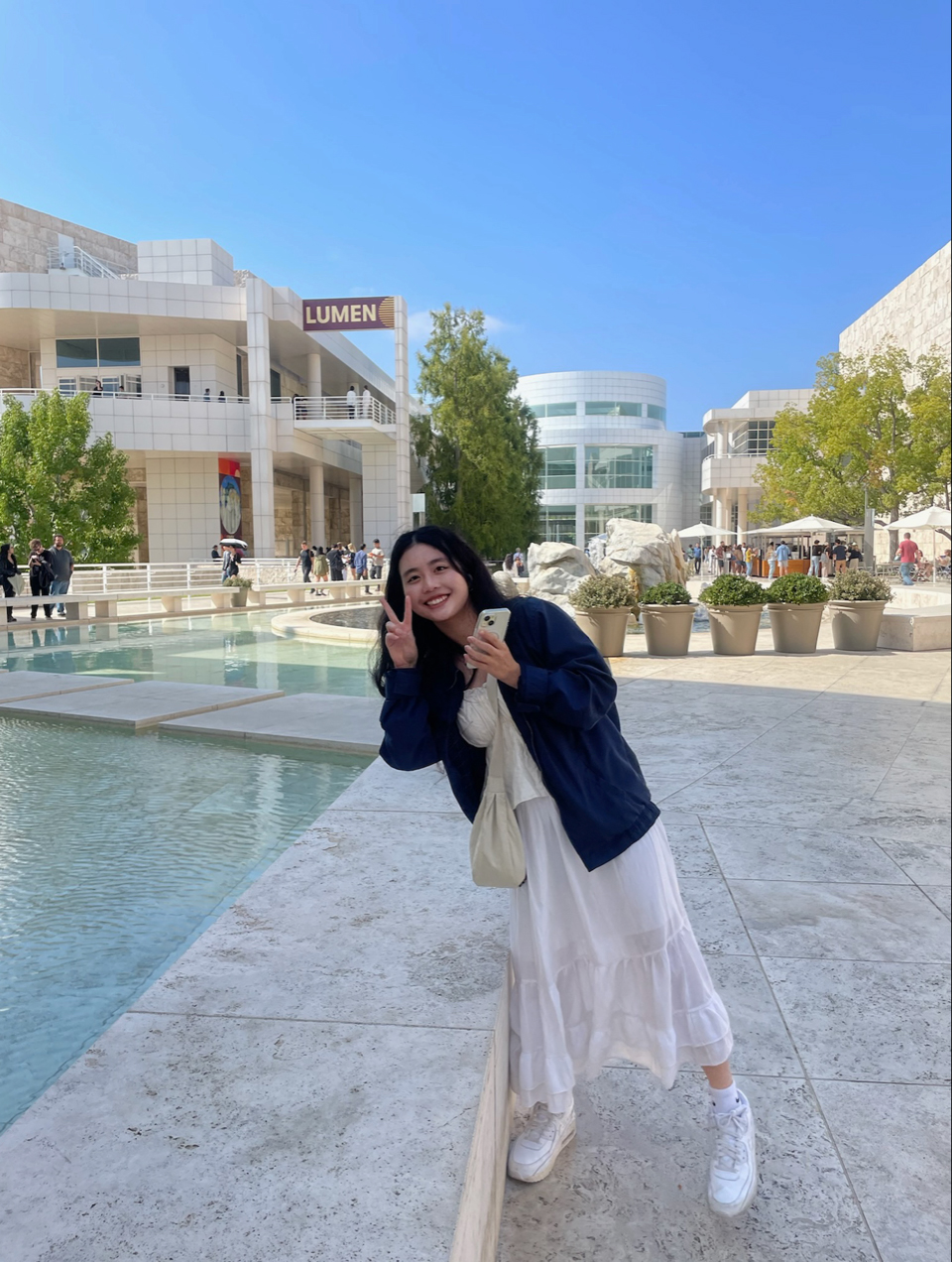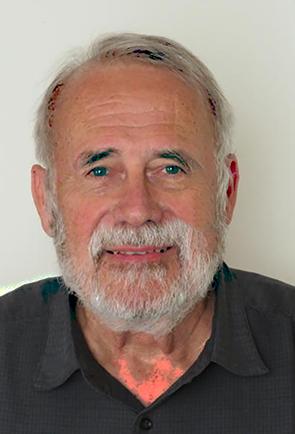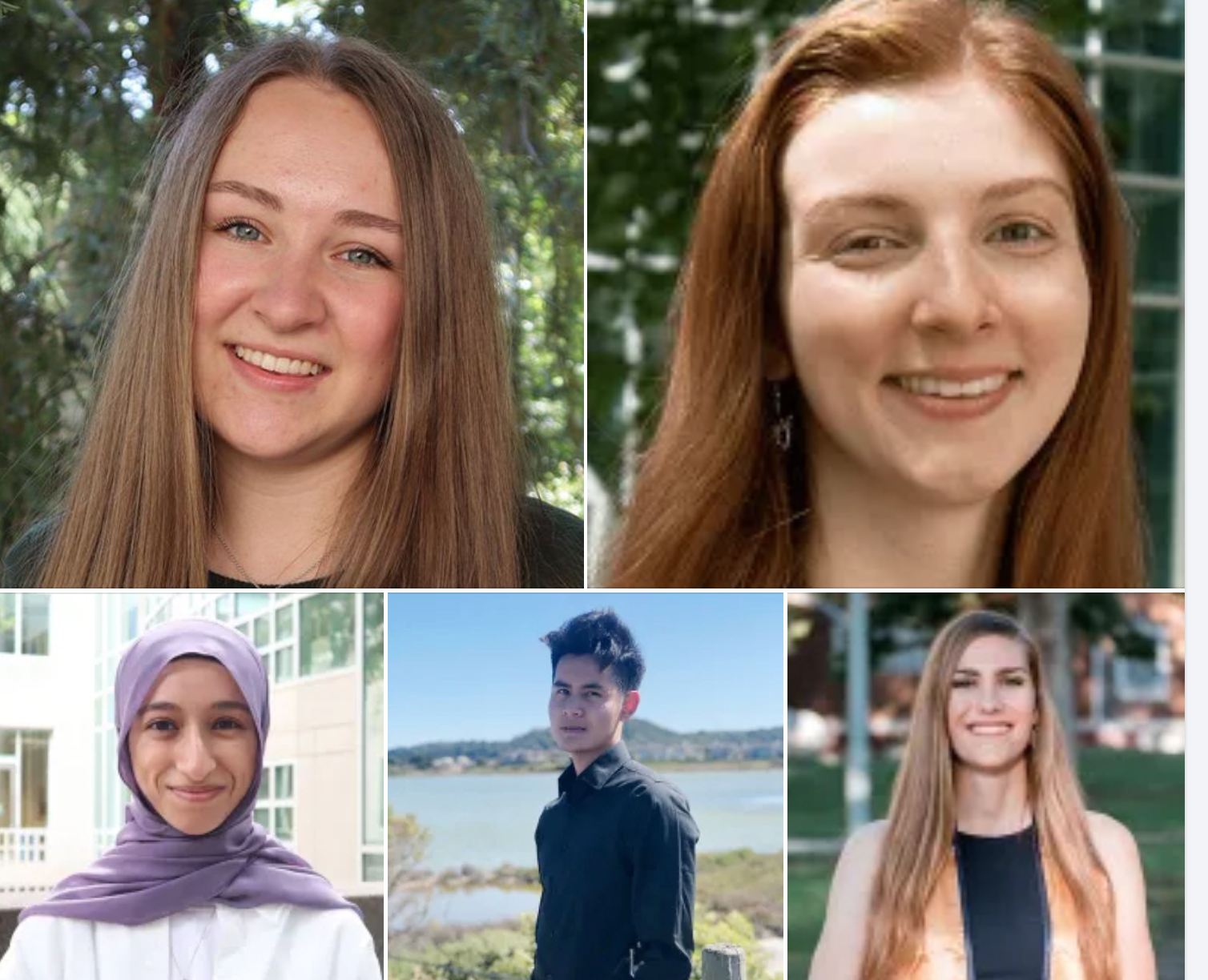
The Lang Prizes: Six Consecutive Winners from Carey Courses
Miranda Do-Tran Wins SEM Award for Research Paper on 'Midlife Hypertension and Dementia'

(Editor's Note: See James R. Carey's '10 Principles of Writing' Below)
When UC Davis student Miranda Do-Tran won the Science, Engineering and Mathematics (SEM) category of the UC Davis Library’s 2025 Norma J. Lang Prize for Undergraduate Information Research, the honor was not only special for her, but for UC Davis distinguished professor emeritus James R. Carey of the UC Davis Department of Entomology and Nematology.
Judges awarded Do-Tran a $2000 cash prize for her well-researched and well-written research paper, “Midlife Hypertension and Dementia: The Shadow Link” that she completed in Carey's Longevity course.
This marks the sixth consecutive year that a student in a Carey course has won the top SEM Award.
Carey retired in June 2024 after a 45-year career at UC Davis, but came out of retirement last fall to teach the human development course pro-bono.
The Lang Prize, launched in 2017, recognizes undergraduate students whose research projects "make extensive use of library resources, services or expertise" and "advance the students’ understanding of the academic research process." A bequest from the late Norma J. Lang, a professor emerita of botany, funds the project.
The Lang Prize includes two categories: SEM and Arts, Humanities and Social Sciences (AHSS). The 2025 AHSS category winner is Mariana Perez Sierra, who submitted "Expandiendo La Herida: How U.S. Training Exacerbated Human Rights Violations During Chile’s Dictatorship."
Carey's Longevity course, an upper division undergraduate course (fall quarter and summer session), zeroed in on biodemographic concepts in both humans and non-human species. Carey not only taught the course content, but specifically taught his students how to write a research paper.
In her paper, Do-Tran, a second-year cell biology major, explored the link between midlife hypertension and dementia through clinician interviews and analysis of peer-reviewed journal articles, opinion pieces, and an Alzheimer’s documentary. Do-Tran said she used the forward-backward citation method to map the field over time, examining both a study’s references (backward citation) and newer studies that cite it (forward citation) for highly cited pieces of research.
Do-Tran, a native of Cupertino, and a 2023 graduate of Archbishop Mitty High School, San Jose, plans to become a physician/scientist. "I enjoy both laboratory and clinical research," she said.
“Hypertension runs deep in my family,” Do-Tran wrote in the accompanying reflective essay. “Growing up, many of my relatives struggled with high blood pressure but rarely talked about their condition or sought help. Unfortunately, many long-term consequences of hypertension are still unknown. Later, as a student in Dr. Carey’s Longevity course and a participant in the Advancing Diversity in Aging Research (ADAR) program at UC Davis, I developed a strong interest in the intersection of midlife hypertension and dementia.”

“Dr. Carey’s course introduced me to broader aging-related diseases and their impacts on society, while ADAR provided hands-on exposure to epidemiological datasets and methodologies used to assess cognitive decline,” she shared. “Midlife may be a crucial window for active anti-hypertensive treatment to reduce risk of cognitive decline and other late-life morbidities. Given my personal experiences and pertinent information gleaned from the classroom and laboratory, I was driven to pursue a term research paper for Longevity, investigating whether midlife hypertension contributes to dementia risk.”
Her prize-winning research paper is online at https://library.ucdavis.edu/wp-content/uploads/2025/05/miranda-do_tran-research.pdf.
In her paper, Do-Tran pointed out that "the impact of cognitive decline, emotional distress notwithstanding, is financially burdensome, with estimated costs of dementia in the U.S, to be over $500 billion in 2019 (Skaria et. al, 2022).
In her summary, she wrote: "The aging U.S. population faces an increasing assortment of age-associated morbidities, with dementia emerging as one of the most debilitating conditions, both financially and emotionally. Recent evidence suggests that midlife hypertension may be a significant risk factor for late-life dementia. This paper explores the hypothesis of a positive correlation between midlife hypertension and dementia, which otherwise have a complex relationship. Through a comprehensive review of epidemiological studies and proposed biological mechanisms, including vascular damage and inflammatory processes, this investigation seeks to unravel potential causal pathways linking both conditions."
"Confounding variables such as lifestyle factors, genetic predispositions, and comorbid conditions are also critically examined to contextualize the association," Do-Tran wrote. "Gaps in research, such as the need for long-term randomized trials and precision medicine approaches, highlight challenges and opportunities for further studies. Establishing hypertension as a modifiable risk factor for dementia could pave the way for innovative preventative strategies, improving both cognitive outcomes and overall quality of life. Ultimately, this research underscores the importance of early detection and intervention, aligning public health priorities with the goal of promoting a more dignified and fulfilling aging process."
Do-Tran incorporated other non-conventional sources into her research. "Watching Still Alice, a film about a Columbia University linguistics professor diagnosed with Alzheimer’s, demonstrated the daily challenges of living with dementia: not just memory and communication difficulties, but the emotional and psychological toll on both the individual and her family." She also conducted interviews with clinicians, including a neuroradiologist, geriatrician, and a relative "who is a primary care physician managing chronic conditions like hypertension and diabetes."
"These conversations," she shared, "helped me understand the healthcare barriers to effective anti-hypertensive treatment and how they disproportionately affect dementia outcomes. Finally, consulting my epidemiology research mentors in ADAR helped me understand study design and limitations in large scale health research."
For Carey, his academic retirement means that "this is the last time I will have any students submitting their term papers for the Lang Prize competition." His students have won the first-place award since 2020. Five others have won either second- or third-place.

Lang Prize winners from the Carey classrooms since 2020:
- 2020: Jessica Macaluso, “The Biological Basis for Alzheimer's Disease.” (Vincent Pan, a student of UC Davis Distinguished Professor Rick Karban of the Department of Entomology and Nematology, won second) (See news story)
- 2021: Barry Nguyen, “Allostasis: The Fundamental Biology and Implications for Social Standing and Longevity.” (Another Carey student, La Rissa Vasquez, won third.) (See news story)
- 2022: Maram Saada, “Huntington's Disease: Etiology, Research Models and Treatment.” (Two other Carey students, Jessica Hevener and David Vo, tied for third. Second place went to entomology professor Geoffrey Attardo’s student, Jocelyn Chu. (See news story)
- 2023: Jenna Schafer, "Timeout with Torpor: History, Biology and Future Medical Applications of a Survival Strategy." (Two other Carey students, Sarah Shores and Neha Bondra, won second and third, respectively.) students (See news story).
- 2024: Rowan Webster, a human development major, won first place and a $2000 prize for her research paper, “The Relationship Between Childhood Adversity, and Aging: Implications for Human Health Span." Emera Nai’a, also a human development major, scored third her “Delirium’s Impact on Longevity in Older Adults: Unveiling the Connection." (See news story and a list of all the Lang Prize winners and their research papers)
UC Davis offers formal writing instruction through the University Writing Program (UWP) courses, which focus on writing itself, not the content of a discipline. Carey was involved in Writing Across the Curriculum (WAC) courses, in which faculty assign writing projects (typically term papers or lab reports) within disciplinary subjects. However, WAC faculty typically do not explicitly teach writing skills, as the emphasis is on content mastery rather than writing development. Thus, WAC faculty typically grade writing but do not teach writing. In the Carey classrooms, however, students mastered both the disciplinary content and research writing skills.
The recipient of numerous teaching awards from his peers, Carey was named a semi-finalist for the 2017 Baylor University Robert Foster Cherry Teaching Award, an international competition. He received the Entomological Society of America's 2015 Distinguished Teaching Award after winning the regional honor from the Pacific Branch of ESA (PBESA). Among other career highlights: the UC Davis Academic Senate's 2014 Distinguished Teaching Award, and PBESA's 2013 C. W. Woodworth Award. PBESA encompasses 11 Western states, plus parts of Mexico and Canada, and U.S. territories.
Carey, who held a joint appointment as a senior scholar in the Center for the Economics and Demography of Aging at UC Berkeley, is internationally recognized not only for his teaching but his research in insect biodemography, mortality dynamics, and insect invasion biology.
A Professor’s Ten-Part Strategy for Teaching Writing
Writing, says James R. Carey, is "a foundational skill that empowers people to persuade others, document knowledge, express emotion, reflect on experience, clarify meaning, deepen understanding, open doors, attract funding, earn promotions, motivate teams, impress supervisors, inspire subordinates, and convey love, empathy, gratitude, and the full spectrum of human feeling. Because the principles of good writing translate across disciplines, learning to write succinctly, clearly, proficiently, and competently in one context strengthens a person’s ability to communicate effectively in all others."
Carey’s principles of writing were shaped by his 45-year academic career during which he authored or co-authored nearly 250 scholarly works and four books. His teaching "sought to distill the writing model that evolved through this experience and pass it on to his students. His distillation is summarized with ten principles."
1. Writing videos introduce core concepts. Students begin with a 13-part video series Carey produced, which outlines the full writing process—topic selection, ethical use of sources, formatting, drafting, and final editing. These short tutorials ensure all students start with a shared foundation of practical writing, word-processing, and conceptual knowledge before their own papers begin.
2. Models guide the writing journey. Like scientists learning from journal articles, students study exemplary term papers, including Carey’s own mock submission and award-winning student work. These models help students visualize expectations, interpret grading criteria, and understand what distinguishes an average paper from an outstanding one in both structure and voice.
3. Word processing mastery is empowering. Students create custom-style sheets for headings, body text, and hanging paragraphs. They learn to format with purpose: controlling white space, using paragraph settings over manual tabs, and understanding structure through formatting. These foundational skills save time, reduce errors, and make writing more professional and efficient.
4. Typography elevates the page. Students are required to apply key lessons from Butterick’s Practical Typography. Carey emphasizes visual design—1.5-inch margins, exact 15-point spacing, and California FB font at 11 pt—to ensure documents are readable, attractive, and typographically disciplined. A well-set page enhances clarity, focus, perceived authority, and visual elegance.
5. Topic choice sets the foundation. A strong paper starts with a topic that excites the writer and lends itself to academic depth. Students must avoid topics that are too broad, obscure, or weakly sourced. The best topics are focused, feasible, and researchable—making them ideal platforms for building clear, engaging arguments.
6. Research builds depth and authority. Carey encourages students to use 25–40 scholarly sources, well beyond the minimum, emphasizing Google Scholar as a primary tool. Deep research enables stronger arguments, reveals academic conversations, and uncovers meaningful gaps or controversies. The result is a paper with substance, credibility, and a well-informed point of view.
7. Structure drives clarity and flow. Good writing is well-structured writing. Students are taught to outline thoughtfully and use structure as a roadmap for readers. AI tools can help with planning and sequencing, but logic and flow must be internally consistent. Clear structure enhances both the writing process and the reader’s experience.
8. Start with messy writing. The early stage of writing should be exploratory and unpolished. Carey tells students to write without worrying about grammar or transitions—just get ideas down. This content-first approach allows structure and clarity to emerge naturally through revision. Momentum, not perfection, is the goal in the drafting phase.
9. Writing polish comes towards the end. Students are trained to delay fine-tuning until their argument is complete and the structure is firm. Once ideas are clearly laid out, then begins sentence-level refinement—smoothing transitions, improving rhythm, clarifying points, and adding stylistic touches.
10. Finish with disciplined editing. The final stage is a rigorous, multi-pass edit. Students tighten prose, trim redundancies, sharpen transitions, and fine-tune word choice. Carey teaches that editing is not a single task but a deliberate, recursive process. The goal is excellence, not perfection—recognizing when to stop is part of the craft.
The future of university writing instruction:
Professor Carey believes the future of university writing instruction will evolve along two converging paths. "The first will follow the traditional model, using AI as an assistive tool to improve grammar, editing, and clarity—enhancing but not replacing human authorship. The second will focus on teaching students to become producers of written content through prompt engineering, curating AI outputs, and refining tone, structure, and accuracy, with AI generating nearly all of the raw verbiage. Eventually, these two approaches will merge into a new reality where writing becomes a seamless blend of human- and AI-generated content. Yet, original writing must still be taught, because clear writing is the very process that sharpens and refines clear thought."
Resources:
UC Davis Library Posting: How to write a research term paper (James R. Carey):
https://app.screencast.com/NvHL3R8W58sOY?tab=Details
Basics of Term Paper-Writing (James R. Carey on YouTube)
https://www.youtube.com/watch?v=a2DE7nC-f_w
Butterick’s Typography:
https://practicaltypography.com/
All Lang Prize Winners (with Research Papers Posted):
https://library.ucdavis.edu/lang-prize/winners/
